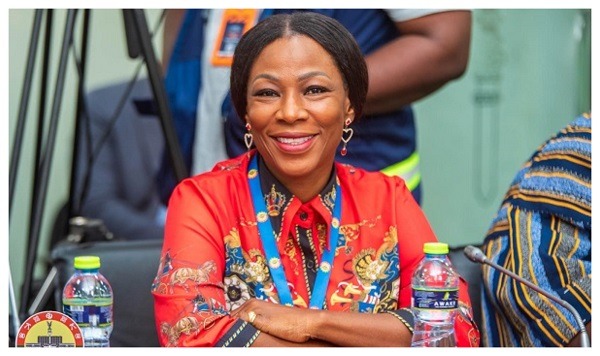In a nation where politics often drowns out truth, Ghana’s National Cathedral project has suffered more from misinformation and weaponized narratives than from actual mismanagement. While critics branded it “the world’s most expensive hole,” the reality tells a story of deliberate, structured work on a national monument meant to serve spiritual, cultural, and economic purposes.
Misleading the Nation: How the Narrative Was Hijacked
At the height of media scrutiny, the project was ridiculed, demonized, and politically weaponized. Leading this charge was MP Samuel Okudzeto Ablakwa and a host of propagandists, who—either out of ignorance or malice—reduced the project to a joke. By labeling deep excavation works as a “hole,” they effectively ignored the complex phases required in world-class infrastructure development.
This narrative was so persistent and effective that many Ghanaians now believe little to no work was done—an assertion that is demonstrably false.
Work Completed to Date: The Truth Behind the Site
Contrary to public perception, extensive progress has been made on both the design and construction fronts. Here’s a breakdown:
- Architectural Design by Adjaye Associates
Project Initiation – 100%
Project Brief – 100%
Concept/Schematic Design – 100%
Design Development – 100%
Construction Documentation – 95%
Tendering – Contract signed with main contractor (RIBADE JV) on 29 October 2021
Design Revisions (Museum & Restaurant extensions) – Complete
- Integration of Museum, Garden & Economic Engine (Nehemiah Group)
Design of Bible Museum, Biblical Gardens, and integrated economic components – 100% Complete
- Construction Work (RIBADE JV)
Physical Construction: 8% Complete
Site fully established with support infrastructure
5 cranes purchased; 3 installed
Concrete batching plant, rebar yard, offices, canteens, and warehouses set up
Area of 70,000 m² cleared
Existing utilities (electricity, water, sewage) relocated
230,000 m³ of earth excavated
1,400 m³ of concrete laid
1,900 tonnes of rebar delivered; 220 tonnes installed
10,000 m² of waterproofing materials procured and installation underway
Approximately 120 trees preserved within the site perimeter
These are not theoretical achievements—they are concrete, documentable, and visible for anyone who takes the time to investigate beyond slogans and soundbites.
The Price of Poor Communication
Despite this progress, the project team failed to mount an adequate public communication strategy. The result was a dangerous vacuum filled by political actors who portrayed the Cathedral as a failed “vanity project” rather than a national asset. The Secretariat did little to counter this narrative with data, visuals, or public engagement, allowing misinformation to harden into public opinion.
Beyond Religion: Economic and National Benefits
Often overlooked is the Cathedral’s potential as a multi-functional national asset—a world-class religious monument, a tourism anchor through its Bible Museum and Gardens, and a hub for employment and local construction expertise. In the right context, it could generate long-term returns culturally and economically.
Correcting the Record
Those who once mocked the Cathedral as a hole in the ground may have only revealed their lack of understanding about large-scale engineering projects. Excavation is one of the most critical—and costly—phases in any modern construction project. To trivialize that work is to ignore the scope and ambition behind the vision.
If the project had been better explained, publicly audited, and nationally embraced—as was the intention—it would not now be used as a political wedge. Certainly, if President Akufo-Addo had wanted to “fold it up and send it to Kyebi,” as detractors insinuated with tribalized cynicism, it would not stand in central Accra as it does today.
What Comes Next
For the National Cathedral to reclaim its place as a unifying national vision, the following steps are urgent:
Publish a clear, independent audit of work and spending to date
Engage in transparent communication with Ghanaians
Involve respected non-partisan figures in oversight
Emphasize the national—not partisan—character of the project
The National Cathedral was never just a structure. It was an opportunity—for unity, for pride, and for global visibility. Whether that opportunity is lost or redeemed will depend on whether truth is allowed to speak louder than propaganda.
Editor’s Note: This article is based on publicly available data from the National Cathedral Secretariat, architectural teams, and contractors involved in the project

